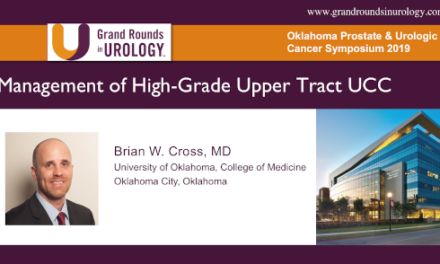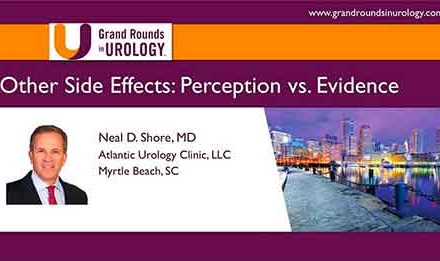The Pros and Cons of Evaluating Hematuria
The Pros and Cons of Evaluating Hematuria
Summary:
Matthew E. Nielsen, MD, MS, discusses the challenge asymptomatic microscopic hematuria (AMH) poses in urologic practices. He summarizes the evolution of guidelines for evaluating hematuria and trade-offs in benefit, harm, as well as cost of different diagnostic approaches.
Project from The American College of Physicians
Dr. Nielsen centers his presentation around a project he conducted with the American College of Physicians, published in 2016. The narrative literature review’s purpose was to increase primary care physicians’ awareness of the association of hematuria with urinary tract cancer. Also, it intended provide practical advice to support high value care.
The research group compared differences between multiple AMH guidelines. These variations reflect differing opinions regarding implicit trade-offs in benefits, harms, and costs of any given approach, as well as uncertainty in the evidence base.
Uncertainty in Guidelines
In 2006, a health technology assessment found 79 existing diagnostic algorithms relevant to evaluating hematuria. However, none of these algorithms underwent formal evaluations in terms of patient outcomes. Later, in 2012, the AUA developed AMH specific recommendations. But, none of these recommendations were supported by evidence above a Grade C.
Due to uncertainty in guidelines, major gaps exist in current practice and policy. For example, the urological community held major concerns about harms of computerized tomography (CT) urogram exams, low yield testing, and potentially avoidable radiation harms.
Risk Stratification
In 2012, Dr. Ronald K. Loo and a group at Kaiser Permanente led an effort to develop risk index that separated AMH patients into low, moderate, and high risk of cancer detection. This risk index had an ROC curve of 0.85. Meanwhile, the previously established approach in AUA guidelines had an ROC curve of 0.53. Consequently, Kaiser Permanente had a basis to create its own guidelines and algorithm.
Dealing with Alternative Recommendations for Evaluating Hematuria
A research team published a cost-effectiveness analysis of common diagnostic approaches for AMH evaluation in 2017. The analysis concluded that, out of the observed approaches, a renal ultrasound and cystoscopy combination is the most cost-effective.
Subsequently, Dr. Nielsen’s group created a mathematical simulation model for evaluating hematuria. This model is based on all the aforementioned literature, guidelines, and data.
Conclusions:
Finally, Dr. Nielsen encourages clinicians to question habits and assumptions and relinquish old ways of thinking about problems. In this way, the urological community can continue to improve high value care. In the future, there is still much work to be done in order to optimize care of AMH in the United States.






